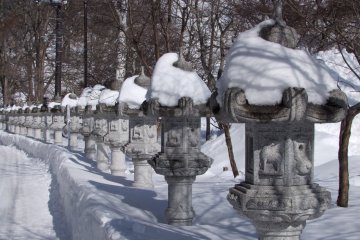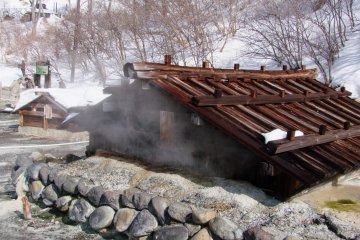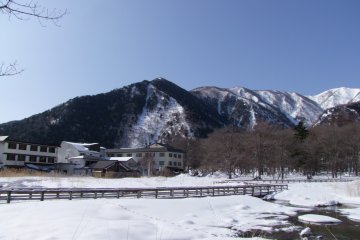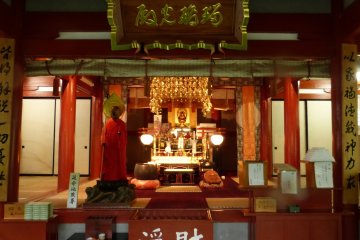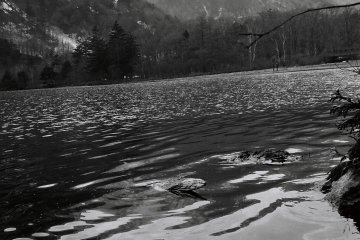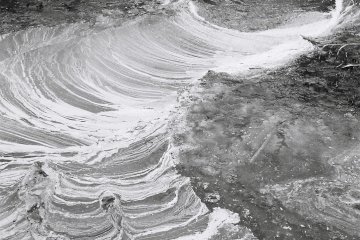Tucked away just North of the pristine Yuno Lake in Nikko National Park is Onsenji – a small Buddhist temple that houses one of the tiniest public onsen baths. With zero amenities and intense geo-thermal temperatures, the temple provides a day bather alternative to the bustle of hot spring resorts and ryokans.
After a rejuvenating but exhausting trip to Gunma's Takaragawa Onsen, boasted as the “Yokozuna” of onsen and the biggest in Eastern Japan, I felt overwhelmed by too many hot spring choices and noisy tourists and caged bears on display (seriously). So I set forth to find the protagonist to the Big Bad Takaragawa Onsen. And my search took me back to my home prefecture of Tochigi.
Onsenji, founded in 788, is a hidden gem. A suggested ¥500 donation to the temple gives you access to a traditional bath that fits four to six people in a room not much bigger than your living room. The temple does not provide anything beyond hospitality and slippers, so be sure to bring your own towels.
An eighty-minute, ¥1,700 yen bus ride from the Nikko Station bus terminal drops you off in a parking lot in Yumoto Onsen Town. Onsenji is a five-minute walk Northeast of the bus stop. Look for the stone lamp fixtures that line the path to Onsenji. If you have time, explore beautiful Yuno Lake's shoreline, enjoy a foot onsen in town, or take in the 1,200 year-old Yunodaira Marsh next door to Onsenji. As the ancient source of Nikko’s hot spring water, you can watch water bubble and boil up from the ground beneath you.
If you seek geo-thermal temperatures that would scare even the most hardened Yakuza, you’ve come to the right place. A warning sign hangs above the women’s and men’s dressing rooms, cautioning bathers against letting the bath get too hot. The onsen taps directly from Yunodaira Marsh only meters away, so keep an eye on the thermometer in the bath. Personally, I don’t haul myself up sacred mountains and ravines and three-hour bus rides for some luke-warm Dasani dribble I could cook up in my tub at home. Some like it hot, and Onsenji can accommodate.
Essentially, it is a private-use bath open to anyone. The square, wooden tub is housed in what looks and feels like an old mountain cabin. The wooden walls and the stone slab floor illuminated only by natural sunlight crafts a fitting atmosphere. The shower area resides in the same space, just two sets of hot and cold spigots that draw from hoses snaking from the temple down to the marsh. Fair warning, it is hot water. I yelped out in pain after dumping a full bucket of the hot spigot water over my head – in which I received praise and admiration for my bravery from bathers looking on. “You are big man!” the old man proclaimed, nodding his head.
And so, for the next two hours, there were just three bathers, the silence, and the slow pour of hot spring water from the long neck spigot. There was nothing and no one to distract from the relaxation. Onsenji, the mini-me of hot springs, proved to be one of my favorite excursions in Japan.



